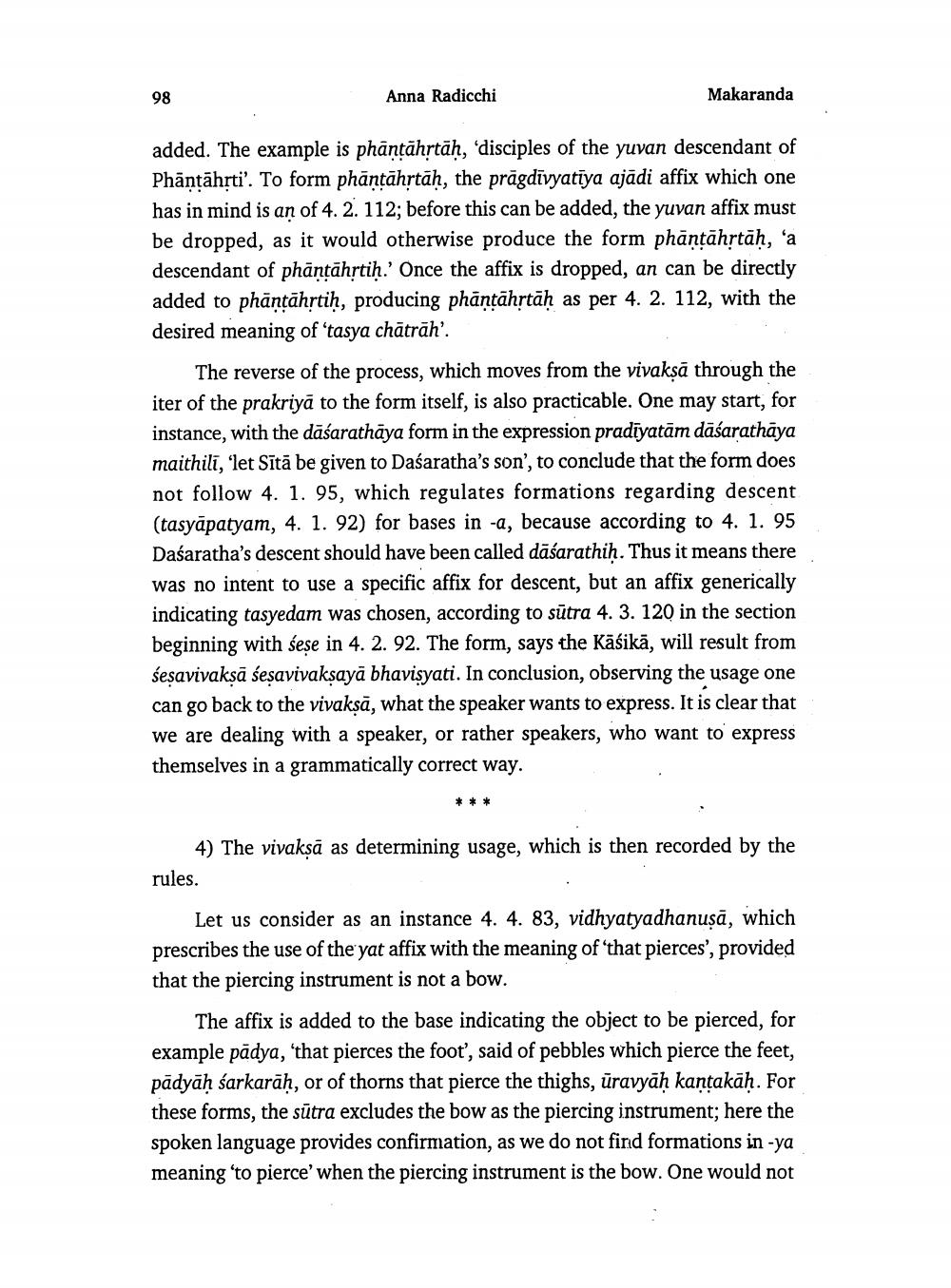________________
98
Anna Radicchi
Makaranda
added. The example is phānṭāhṛtāḥ, 'disciples of the yuvan descendant of Phäntähṛti'. To form phäntähṛtāḥ, the pragdivyatiya ajādi affix which one has in mind is an of 4. 2. 112; before this can be added, the yuvan affix must be dropped, as it would otherwise produce the form phäntähṛtāḥ, 'a descendant of phäntähṛtiḥ.' Once the affix is dropped, an can be directly added to phāṇṭāhṛtiḥ, producing phäntähṛtāḥ as per 4. 2. 112, with the desired meaning of 'tasya chātrāh'.
The reverse of the process, which moves from the vivakṣa through the iter of the prakriya to the form itself, is also practicable. One may start, for instance, with the dāśarathāya form in the expression pradīyatām dāśarathāya maithili, 'let Sītā be given to Dasaratha's son', to conclude that the form does not follow 4. 1. 95, which regulates formations regarding descent. (tasyapatyam, 4. 1. 92) for bases in -a, because according to 4. 1. 95 Dasaratha's descent should have been called dāśarathiḥ. Thus it means there was no intent to use a specific affix for descent, but an affix generically indicating tasyedam was chosen, according to sūtra 4. 3. 120 in the section beginning with śeşe in 4. 2. 92. The form, says the Käsikā, will result from seṣavivakṣā seṣavivakṣayā bhaviṣyati. In conclusion, observing the usage one can go back to the vivakṣā, what the speaker wants to express. It is clear that we are dealing with a speaker, or rather speakers, who want to express themselves in a grammatically correct way.
***
4) The vivakṣā as determining usage, which is then recorded by the rules.
Let us consider as an instance 4. 4. 83, vidhyatyadhanuṣā, which prescribes the use of the yat affix with the meaning of 'that pierces', provided that the piercing instrument is not a bow.
The affix is added to the base indicating the object to be pierced, for example padya, 'that pierces the foot', said of pebbles which pierce the feet, pādyāḥ śarkarāḥ, or of thorns that pierce the thighs, ūravyāḥ kanṭakaḥ. For these forms, the sūtra excludes the bow as the piercing instrument; here the spoken language provides confirmation, as we do not find formations in -ya meaning 'to pierce' when the piercing instrument is the bow. One would not




